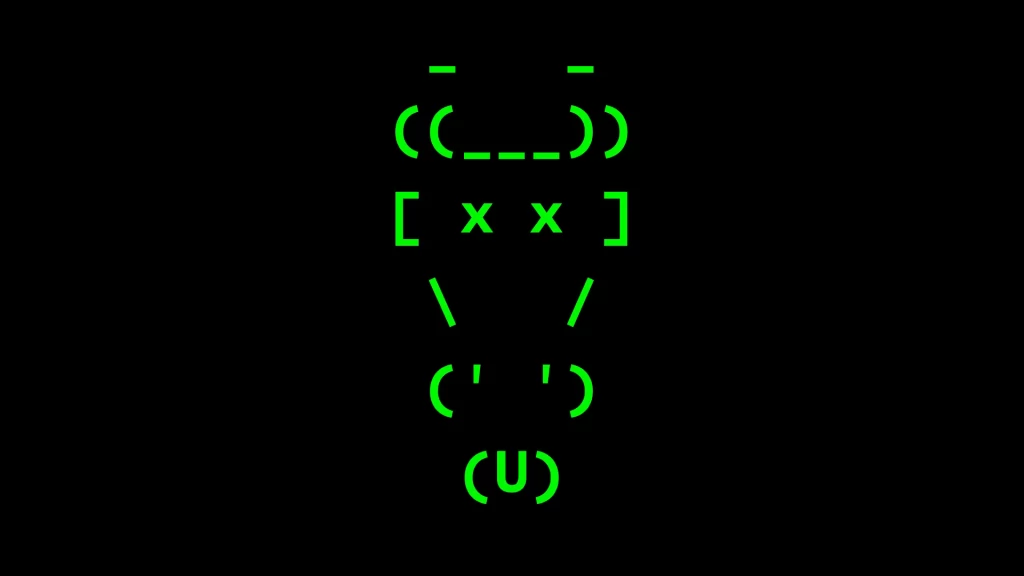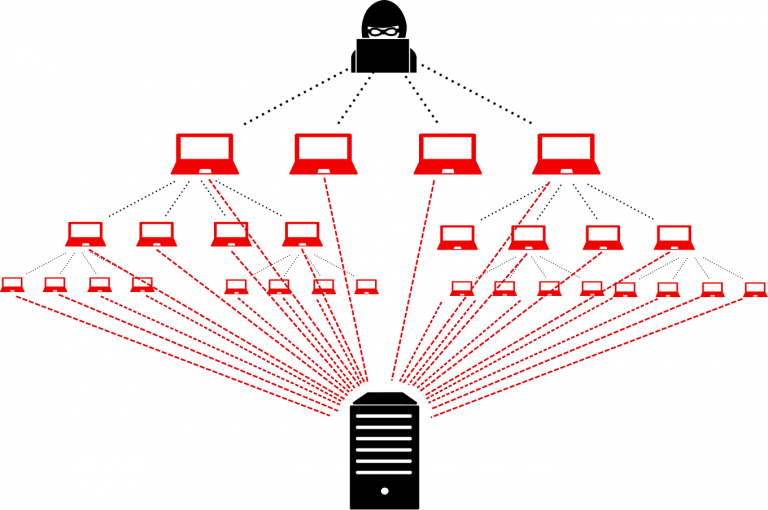The Dark Web is the internet’s darker side, not indexed by regular search engines like Google. It’s a hidden part of anonymity, hosting legal and not-so-legal activities. Enter Hacktivism Activism, where skilled individuals use hacking for social, political, or environmental causes. They’re digital vigilantes fighting cyber injustice and promoting change.
How do they navigate the Dark Web? With encrypted networks and specialized tools, they stay hidden, one step ahead. This blog explores hacktivism’s motivations, impact, and ethical lines.
Early Rise of Hacktivism on the Dark Web
Back in the day, when the internet was still finding its footing, passionate individuals with a knack for technology started forming hacktivist groups. These tech-savvy rebels sought to use their digital prowess to make a statement. Hacktivism has a rich and intriguing history from the early 1980s.
The Cult of the Dead Cow (CDC), the first known hacktivist group, was at the forefront, advocating for freedom of expression and challenging censorship. As the 90s rolled in, the Electronic Disturbance Theater (EDT) emerged, leveraging technology to disrupt organizations with opposing beliefs.

Fast forward to the early 2000s, and hacktivism began making headlines, with groups like Anonymous and LulzSec gaining prominence. These groups championed various causes, from exposing corruption to fighting for social justice. However, their methods often courted controversy, as they employed illegal means to achieve their objectives.
In the late 20th century, hacktivism began as a fusion of hacking and activism. The Dark Web, with its cloak of anonymity, emerged as the ideal breeding ground for these tech crusaders.
Let us regale you with some legendary hacktivist tales!
In the early 2000s, groups like Anonymous burst onto the scene, donning their iconic Guy Fawkes masks. Their operations ranged from fighting for internet freedom to targeting oppressive regimes.
Remember the Arab Spring? Hacktivists played a role in supporting the people’s struggle for democracy. These cyber warriors believed in taking a stand for what they believed was right, even if it meant crossing legal boundaries.
Tools and Techniques Leveraged by Hacktivists
Now, let’s peek into the hacktivists’ toolkit! As they were quite the clever bunch!
They used Distributed Denial of Service (DDoS) attacks to overwhelm websites, making them inaccessible. The Dark Web offered them encrypted communication channels, allowing them to plan and execute their missions secretly. They were also known for defacing websites with messages that echoed their cause.

But remember, not all hacktivists sought chaos. Some were more into the digital art of “hacktivism for good,” aiming to expose corruption and bring social issues to the forefront.
What Motivations Lie Behind Hacktivism?
Not everything happens itself; there is always a reason behind it. The same goes for dark web hacktivism and activism. There are some reasons behind hacktivist activities.
Social Justice and Political Activism:
At its core, Hacktivism is fueled by the passion for social justice and political change. These hacktivists are digital crusaders who use their tech-savvy skills to raise awareness about societal issues, corruption, and oppression. They believe that the digital realm provides them with a platform to make a meaningful impact on real-world problems.
Cybersecurity Advocacy and Awareness:
Believe it or not, some hacktivists are not out to cause chaos but rather to highlight vulnerabilities in online systems. They aim to nudge organizations into improving their cybersecurity measures by exposing security flaws in websites or networks. Think of them as the digital watchdogs pushing for a safer online environment.
Freedom of Information and Whistleblowing:
Transparency is the name of the game for this category of hacktivists. They view information as a powerful tool for accountability and strive to promote freedom of information. These digital renegades are often behind large-scale data leaks, giving the public a peek behind closed doors.
The Dark Web’s Role in Facilitating Hacktivism
One of the most intriguing aspects of the Dark Web is its ability to offer a cloak of anonymity to its users. This cloak allows hacktivists to communicate and collaborate without revealing their true identities. It’s like wearing a digital mask, where you can discuss ideas and plan actions in secrecy, away from the prying eyes of surveillance.
Imagine a digital underground bustling with discussions and exchanges of ideas on causes that passionate hacktivists hold dear. The Dark Web becomes a virtual gathering spot for these individuals, united by their shared goals and a desire to effect change in the world. It’s a hub where anonymity fosters open dialogue, free from fears of retribution or censorship.
In hacktivism, sensitive information and leaks can play a pivotal role. Here, the Dark Web provides a secure haven for whistleblowers and those who dare to expose secrets that might otherwise be buried. Platforms on the Dark Web become digital drop zones where crucial information can be shared discreetly, away from the radar of mainstream channels.
Hacktivists use the Dark Web to amplify their voices and reveal truths that might otherwise be suppressed. Whether it’s unveiling government misconduct or corporate malpractice, the Dark Web becomes a conduit for shedding light on matters that demand public attention.
Notable Moments of Hacktivism in Recent Times
Recent years have witnessed an upsurge in hacktivist activities, with prominent cases making headlines worldwide. The most well-known group, Anonymous, rose to fame in the early 2010s for launching cyber-attacks against corporations and governments.
In 2016, during the US presidential election, hackers suspected to be affiliated with Russia targeted the Democratic National Committee’s email and computer systems, stirring international controversy.
2019 Chile experienced ongoing protests, and hacktivists seized the opportunity to target government agency websites and social media accounts, amplifying their message.
More recently, in 2020, hacktivist collectives responded to the killing of George Floyd by directing their efforts toward police departments and law enforcement agencies.
These are just glimpses of the myriad hacktivist endeavours that have recently surfaced. The motives and methods employed by hacktivists are diverse, generating ongoing debates concerning cybersecurity and societal impact.
Law Enforcement vs. Hacktivists
The constant battle between law enforcement agencies and hacktivists is like a high-stakes game of cat-and-mouse. Each side tries to outwit the other while navigating the murky waters of digital freedoms and legal boundaries.
Notable Cases and Legal Ramifications
Every hacktivism case is unique, and they don’t always result in a conviction. Here are just a few notable examples to illustrate the varied motivations and legal outcomes involved.
Anonymous PayPal attack
One such instance involves the infamous Anonymous PayPal attack back in 2011. In this case, 14 individuals associated with the hacktivist group Anonymous were arrested for launching a distributed denial-of-service (DDoS) attack on the PayPal website. The attack was part of an operation to expose “corporate interests controlling the internet and silencing the people’s rights to spread information.” Surprisingly, the defendants managed to avoid jail time.
Aaron Schwartz Legal Trouble
Another prominent figure in the world of hacktivism was Aaron Schwartz. He faced legal trouble after initiating hundreds of PDF download requests per minute from the JSTOR digital library. Although not strictly an act of hacktivism, his actions were seen as transgressive hacking. The legal response to his actions was perceived by many as harsh and disproportionate, with potential sentences reaching up to 35 years in prison. Tragically, Schwartz eventually took his own life.
Jeremy Hammond case
Similarly, the Jeremy Hammond case made waves in the hacktivist community. Hammond, known for his political activities, hacked the website of the Protest Warrior, a pro-war right-wing group. He accessed members’ credit card numbers for donations to support left-wing groups. His actions resulted in a two-year prison sentence.
The Ongoing Battle for Digital Freedoms
These cases exemplify the complex landscape surrounding hacktivism and law enforcement. While some hacktivists may be driven by noble intentions to fight for digital freedoms and expose injustices, their legal consequences can be severe. It raises questions about the appropriate response from authorities and the need to balance safeguarding digital infrastructure and respecting individual rights.
In a world where technology evolves rapidly, the clash between law enforcement and hacktivists unfolds on the Dark Web. While law enforcement agencies strive to maintain order and protect society from cyber threats, hacktivists challenge the status quo and seek to bring attention to issues that they believe deserve public awareness.
The Future of Hacktivism and the Dark Web
When it comes to hacktivism, the landscape is always evolving. We’re witnessing some remarkable trends and innovations shaping digital activism’s future. From new hacking techniques to cutting-edge encryption methods, these tech-savvy activists keep us on our toes.
One big thing to watch is the rise of AI-driven hacking tools. Yep, you heard it right! These AI-powered wizards can identify vulnerabilities faster than ever, making it easier for hacktivists to expose system flaws and draw attention to important issues. With great power comes great responsibility, right?
The Role of Tech Giants and Policy Makers
Now, let’s talk about the big players in this game – tech giants and policymakers. As hacktivism gains momentum, these guys are under the spotlight. Tech giants are grappling with the challenge of balancing user privacy and security.
On the one hand, they want to keep user data safe, but on the other, they also need to address the concerns of hacktivists advocating for more transparency.
As for the policymakers, they’ve got their hands full too. The growing influence of hacktivism has put the need for updated and robust cyber laws front and center. They’re juggling between protecting their nations’ interests and preserving online freedom. It’s a delicate dance, my friend.
Empowering Ethical Hacktivism for a Better World
Okay, this is the exciting part! Amid all the buzz, it’s essential to remember that not all hacktivism is “bad.” A whole army of ethical hacktivists is out there, fighting for noble causes. From exposing corruption to advocating for human rights, these digital warriors use their skills for the greater good.
The key is to channel that cyber energy towards positive change. Encouraging collaboration between hacktivists, tech companies, and policymakers can lead to more responsible and constructive actions.
Conclusion: Embracing the Complexity of Digital Activism
In conclusion, the future of hacktivism and the Dark Web is a fascinating maze of possibilities. As emerging trends and innovations shape the landscape, it’s crucial for all of us – tech enthusiasts, policymakers, and everyday netizens – to stay informed and engaged.
Instead of brushing hacktivism aside as something “bad,” we must recognize its potential for good. Empowering ethical hacktivism can pave the way for a more just and equitable society. So let’s embrace the complexity of digital activism and work together to make the cyber world a better place. Remember, the future is in our hands!